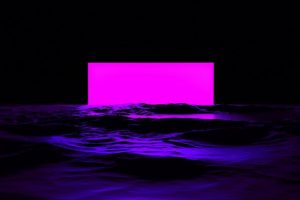How I Made My First Land Art NFT

Did you know that the majority of turtle species face extinction? And that a significant proportion of all sea turtle species are already considered endangered or critically endangered?
It’s a sobering statistic, and one that is worsening due to a combination of factors. Sea turtles have been struggling for many years with over-hunting, pollution, climate change, and other issues.
One project that’s helping out is called SEE Turtles, which protects endangered sea turtles with conversation tours, supporting nesting beaches, helping to end demand for turtle shells, and more. Next Earth, the NFT-based replica of Earth, recently supported this project as part of a $64,000 charity campaign.
Creating a Turtle Pixel Art NFT
On Next Earth, you can now draw pixel-based land art on the surface of the ocean. Given our mutual love for turtles, I wanted to draw a giant turtle as a Land Art NFT. To get started, I connected my Binance Chain wallet and bought some ocean tiles. Using their pixel art interface, I colored in the tiles to create a turtle.
I then published my land art and added it to the NFT marketplace. The same interface that allowed me to list my land art also allows anyone else to buy and trade it with other users.
Why Land Art?
As Canadian philosopher Marshall McLuhan once said, “the medium is the message.” What this means is that the way in which something is transmitted can impact what it means. When I create an NFT, I’m sending a message about turtles and other species to people who view my creation.
I believe that by adding turtle art to Next Earth, we can help to raise awareness about species extinction issues, while also showing how these issues can be mitigated with thoughtful environmentalism and blockchain technology.
The medium of land art is particularly well-suited to raising awareness for our planet’s most endangered species. Art has the ability to provoke emotions and connect with people on a deep level.
The Immutable Medium
The beauty of NFTs is in their immutability. They cannot be edited or removed once they have been created. They also cannot be copied, forged, or counterfeited. This property of NFTs is incredibly powerful and has the potential to change the way we interact with art.
Imagine what it would be like if you could own digital representations of your favorite works of art. You could share them on social media without worrying about someone copying it and stealing your work.
Being more than just a “fan” but an owner – that’s what owning art would feel like with NFTs. It would allow people to become collectors and owners rather than merely viewers and fans.
The first thing we need is a medium that allows us to create these NFTs. This is where blockchain technology comes in; its immutable ledger allows us to store information such as the artwork itself, the token representing ownership (an NFT), and other metadata such as who created it and when they created it.
Next Earth is one project leading the way when it comes to creative new artistic NFT mediums. They have created a unique way to store and transfer ownership of digital art. This allows artists to offer their work in a tokenized form that is fully transparent, uses blockchain technology, and is totally in the hands of the buyer
The Evolution of NFTs
As a closing point, it’s worth mentioning that digital art has been around for a while. Long before there was Next Earth, artists were already selling limited edition artworks whose scarcity made them more valuable over time. These types of artworks are common in the collectibles industry and have been sold on platforms such as Christie’s and Sotheby’s.
However, until recently, they weren’t really available to the average person who didn’t have access to these platforms. The barrier of entry was quite high – you needed to be very wealthy to buy from an established collector. This meant most people never had access to this form of collectibles which led many people to believe it didn’t exist at all outside of the rarefied world of elite collectors and connoisseurs.
Now with Next Earth, it’s accessible so that anyone can create and own digital representations of their favorite pieces of art.
Source: Read Full Article

